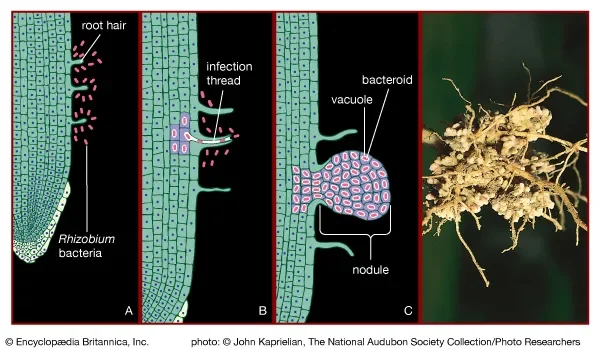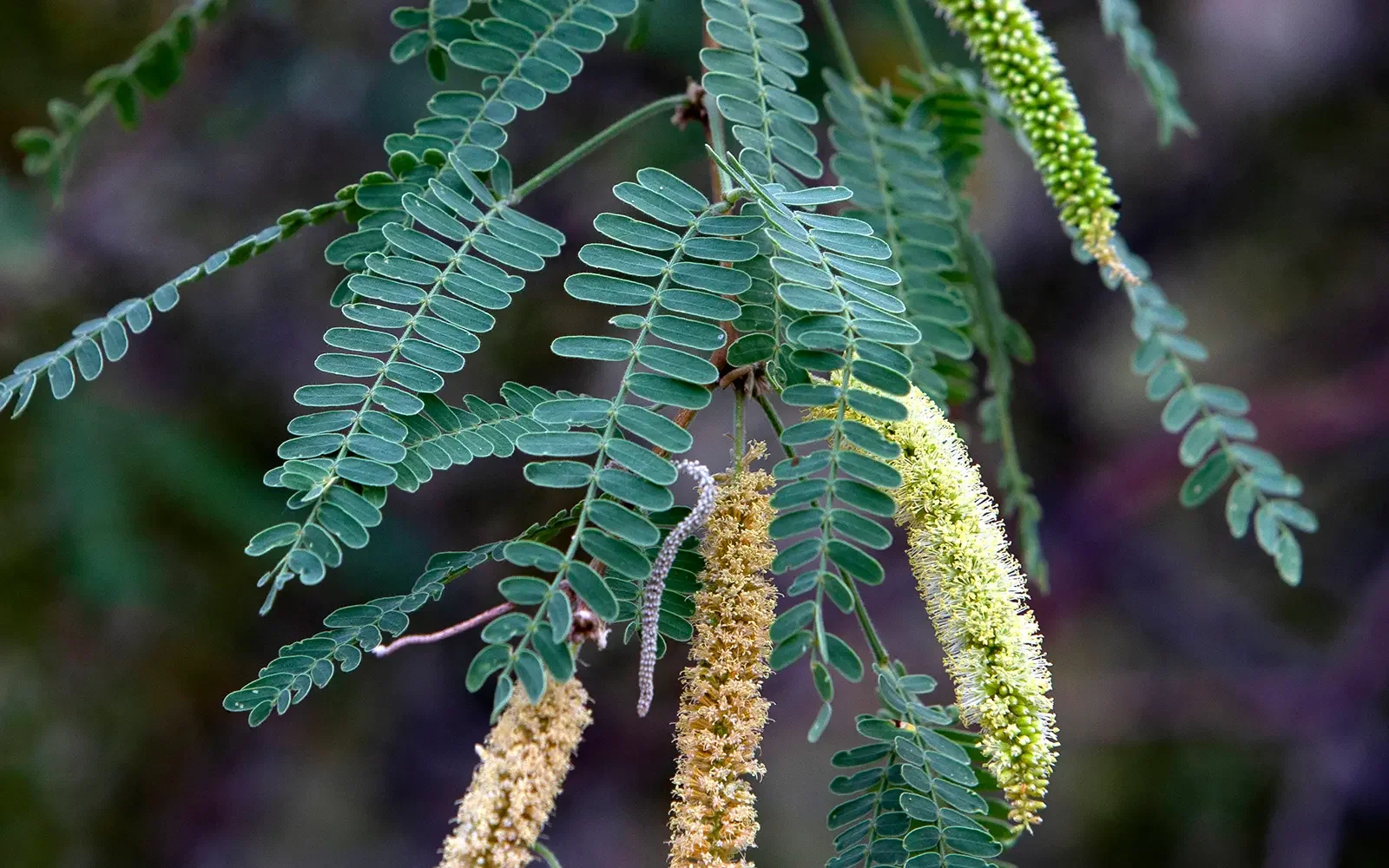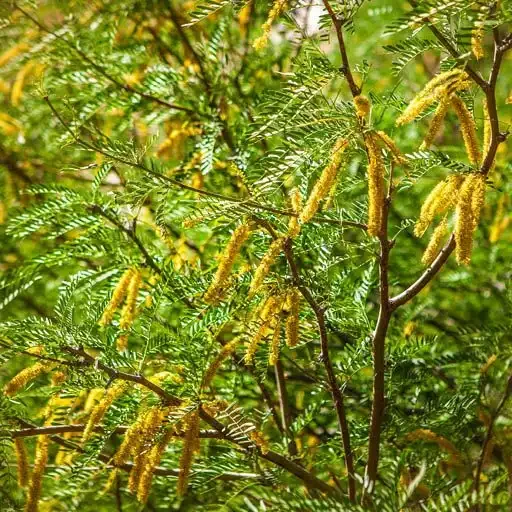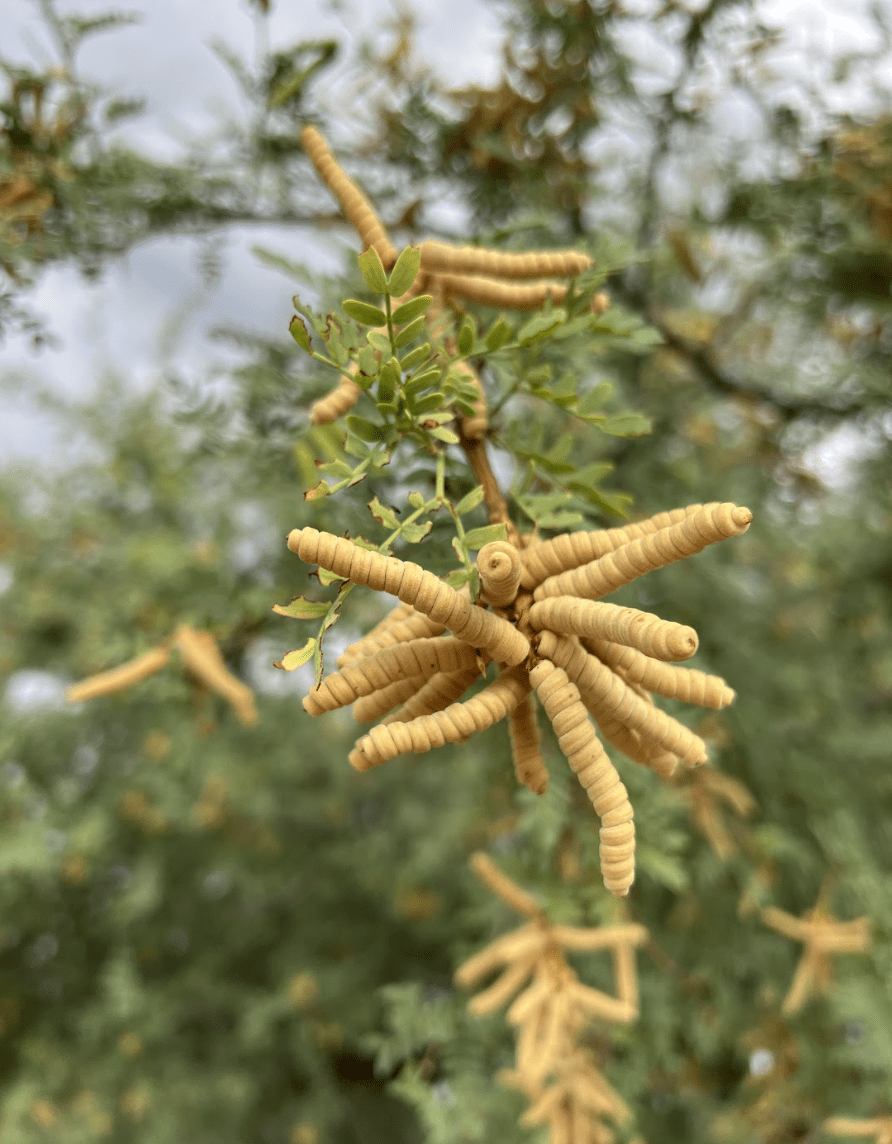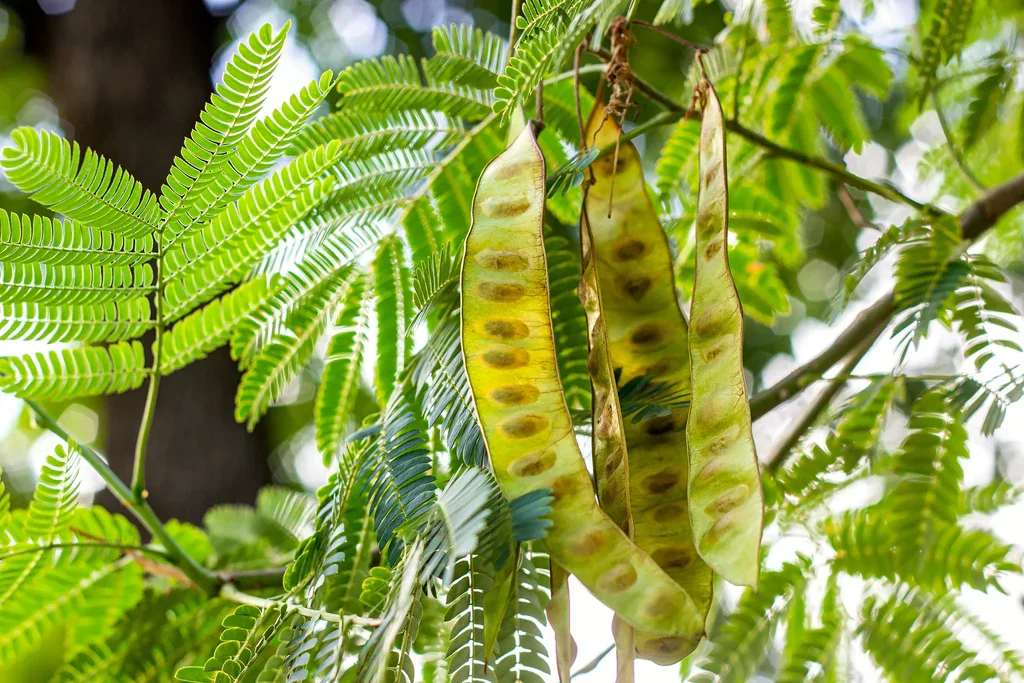Harnessing Nature's Fertilizer: Nitrogen-Fixing Trees and Perennials
In the arid landscapes of Tucson and beyond, where soils are often depleted and water is precious, building resilient ecosystems starts from the ground up. Nitrogen, a vital nutrient for plant growth, is abundant in the atmosphere but unavailable to most plants in its gaseous form. Enter nitrogen-fixing plants: nature's own soil enhancers that partner with bacteria to convert atmospheric nitrogen into usable forms. This article explores the strategic use of species like Mesquite, Honey Locust, legumes, Lupine, and soybeans, delving into the fixation process, its soil effects, and the profound benefits for desert environments. By incorporating these plants, you can foster Sustainable Abundance without relying on synthetic fertilizers, promoting healthier soils and thriving food forests.
What is Nitrogen Fixation?
Nitrogen fixation is the biological process where atmospheric nitrogen gas (N₂), which makes up about 78% of the air we breathe, is converted into ammonia (NH₃) or other compounds that plants can absorb. This essential transformation is primarily carried out by specialized bacteria, such as Rhizobia, in symbiosis with certain plants, particularly legumes. Without fixation, nitrogen remains inert and inaccessible, limiting plant growth in nutrient-poor soils.[https://forages.oregonstate.edu/nfgc/eo/onlineforagecurriculum/instructormaterials/availabletopics/nitrogenfixation/definition] While industrial methods like the Haber-Bosch process produces synthetic fertilizers, natural fixation offers an eco-friendly alternative, reducing environmental impacts like water pollution from runoff and excess salt accumulation.
In natural ecosystems, fixation contributes significantly to soil fertility. For instance, legumes can fix anywhere from 50 to 500 pounds of nitrogen per acre annually, depending on the species and conditions.[https://greencover.com/how-much-nitrogen-can-you-grow-for-next-years-grain-crop/] This not only supports the host plant but also enriches the surrounding soil, benefiting nearby crops and perennials.
The Process and Its Effects on Soil
The magic begins with a symbiotic relationship: nitrogen-fixing bacteria invade the roots of host plants, forming nodules—small, pinkish swellings where the conversion happens. Inside these nodules, the enzyme nitrogenase catalyzes the reaction, breaking the strong triple bond in N₂ and combining it with hydrogen to produce NH₃. The plant provides carbohydrates for the bacteria's energy, while receiving fixed nitrogen in return.[https://pubs.nmsu.edu/_a/A129/]
Once fixed, ammonia is quickly converted to ammonium (NH₄⁺) or nitrates (NO₃⁻) through soil processes like nitrification. These forms are readily available for uptake by the host plant's roots, fueling growth, chlorophyll production, and protein synthesis. But the benefits extend beyond the fixer: up to 30-50 pounds of nitrogen per acre can "leak" into the soil from roots, becoming accessible to neighboring plants.[https://greencover.com/how-much-nitrogen-can-you-grow-for-next-years-grain-crop/] When the plant dies or is incorporated as green manure, decomposition releases even more nitrogen, gradually building soil organic matter. It has even been shown that in some cases, when mature trees perish, they release an immense amount of stored nitrogen through the mycelial network throughout their roots, which boosts growth for the plants to replace it.
In depleted soils, this process revitalizes fertility by replenishing nitrogen reservoirs without external inputs. It also improves soil structure, enhances microbial activity, and increases water retention—critical in dry climates.
Key Nitrogen-Fixing Plants for Your Landscape
Selecting the right nitrogen-fixers can transform your property. Here are some standouts, tailored for desert adaptability:
Mesquite (Prosopis spp.)
Native to the Southwest, Mesquite trees are hardy survivors in arid zones. They form symbiotic relationships with Rhizobia, potentially fixing nitrogen in nutrient-poor soils.[https://bee.agrilife.org/files/2019/12/Mesquite-Ecology-and-Management.pdf] Honey Mesquite, in particular, enriches soil under its canopy, supporting understory plants.[https://winrock.org/honey-mesquite-a-multipurpose-tree-for-arid-lands/] Strategically plant them as shade providers in food forests, where their deep roots access water and fixed nitrogen benefits companions like fruit trees.
The Sonoran Desert, spanning parts of Arizona, California, and northwestern Mexico, hosts several species of mesquite trees (genus Prosopis) that are well-adapted to its arid conditions. These nitrogen-fixing trees are native to the region and play a vital role in desert ecosystems, providing shade, food, and soil enrichment. Below is a list of the primary mesquite species native to the Sonoran Desert: Mesquite trees come in several varieties including hybrids bred for desirable traits.
1. Velvet Mesquite (Prosopis velutina)
Description: The most common mesquite in the Sonoran Desert, particularly in Arizona. It’s a medium-sized tree, typically reaching 20–30 feet, with a spreading canopy, feathery leaves, and small spines. Its pods are edible and were historically a food source for indigenous peoples.
Habitat: Thrives in washes, floodplains, and upland areas with slightly more moisture, common around Tucson and southern Arizona.
Ecological Role: Fixes nitrogen, enriching soils, and provides shade and habitat for wildlife. Its deep roots stabilize soil and access groundwater.
2. Honey Mesquite (Prosopis glandulosa var. torreyana)
Description: A smaller variety of honey mesquite, growing 15–25 feet, with thornier branches and sweet, edible pods. It’s less common in the Sonoran Desert than velvet mesquite but still native to its western edges, including parts of southern California and Baja California.
Habitat: Prefers sandy or gravelly soils in washes and lowlands, often along the Colorado River and western Sonoran regions.
Ecological Role: Like other mesquites, it fixes nitrogen and supports understory plants, with pods serving as a food source for animals and humans.
Screwbean Mesquite (Prosopis pubescens)
Description: A smaller tree or large shrub, typically 10–20 feet, distinguished by its tightly coiled, screw-like seed pods. It has finer leaves and a more compact growth pattern compared to velvet mesquite.
Habitat: Found in wetter areas like riverbanks, washes, and oases, particularly along the Lower Colorado River and parts of the Sonoran Desert in Arizona and Mexico.
Ecological Role: Enhances soil fertility through nitrogen fixation and provides critical habitat in riparian zones, supporting birds and pollinators.
Notes on Identification and Use
Adaptability: All three species are drought-tolerant, with deep taproots that access water unavailable to other plants, making them ideal for permaculture and food forest designs in the Sonoran Desert.
Cultural Significance: Indigenous groups, such as the Tohono O’odham, have long used mesquite pods for flour, syrup, and beverages, highlighting their value in sustainable landscapes.
Strategic Planting: Velvet mesquite is the most versatile for Tucson-area projects due to its prevalence and adaptability, while screwbean suits wetter microclimates and honey mesquite works well in transitional zones.
If you’re planning to incorporate these into your landscape or need help selecting the best species for a specific site in Tucson, let me know, and I can tailor recommendations or provide planting tips!
Honey Locust (Gleditsia triacanthos)
This deciduous tree, a legume family member, excels at nitrogen fixation through root nodules.[https://extension.missouri.edu/publications/wq277] It's drought-tolerant once established, making it ideal for desert permaculture. Use it in alley cropping systems, where rows alternate with crops; the fixed nitrogen boosts yields of nearby vegetables or grains.
Honey Locust Varieties Suitable for USDA Zone 9b
Honey locust (Gleditsia triacanthos), a member of the legume family, is a versatile, nitrogen-fixing tree native to the central and eastern United States but adaptable to a wide range of climates, including USDA hardiness zones 3-9 (and sometimes up to zone 10). In zone 9b, with its mild winters (minimum temperatures of 25-30°F) and hot, dry summers typical of areas like Tucson, Arizona, honey locust thrives once established, offering shade, edible pods, and soil enrichment. Most cultivated varieties are thornless (forma inermis) to make them more user-friendly for landscapes. Below is a list of key varieties suitable for zone 9b, focusing on those that are drought-tolerant and well-suited to arid or semi-arid conditions with proper irrigation.
1. Skyline Honey Locust (Gleditsia triacanthos 'Skyline')
Description: A thornless, upright cultivar with a pyramidal shape, growing 40-50 feet tall and 30-35 feet wide. It features bright green, fern-like foliage that turns golden-yellow in fall, and produces fewer seed pods than other species for reduced litter.
Habitat/Adaptability: Prefers full sun and well-drained soils, tolerating urban conditions, drought, and heat. Ideal for zone 9b landscapes like lawns or streets, where it handles alkaline soils and occasional flooding.
Ecological Role: Fixes nitrogen to improve soil fertility for nearby plants, provides dappled shade for understory crops in permaculture designs, and attracts pollinators with its fragrant flowers. Pods offer food for wildlife.
2. Sunburst Honey Locust (Gleditsia triacanthos 'Sunburst')
Description: A thornless variety known for its striking new growth—bright yellow leaves that mature to green—reaching 30-40 feet tall with a rounded canopy. It's compact and produces minimal pods, making it low-maintenance.
Habitat/Adaptability: Grows well in full sun with moist to dry soils, resilient to heat, wind, and poor soil quality in zone 9b. It's popular for smaller yards or as an accent tree in desert-adapted gardens.
Ecological Role: Enhances biodiversity by fixing nitrogen, supporting beneficial insects, and creating habitat. Its open canopy allows light penetration for companion planting in food forests.
3. Shademaster Honey Locust (Gleditsia triacanthos 'Shademaster')
Description: A vigorous, thornless cultivar with dark green foliage and a vase-shaped form, maturing to 45-50 feet tall and wide. It has excellent fall color (yellow) and is nearly podless for cleaner landscapes.
Habitat/Adaptability: Thrives in full sun and a variety of soils, including clay or sandy types common in zone 9b. Drought-tolerant once established, it's suitable for hot, dry climates with minimal supplemental water.
Ecological Role: As a nitrogen-fixer, it boosts soil health naturally, ideal for permaculture guilds. Provides ample shade to reduce evaporation in arid areas and supports wildlife with nectar and shelter.
4. Imperial Honey Locust (Gleditsia triacanthos 'Imperial')
Description: A compact, thornless selection with a globular shape, growing 30-35 feet tall and wide. Its fine-textured leaves create a lacy appearance, turning yellow in autumn, and it produces few pods.
Habitat/Adaptability: Adapts to full sun, well-drained soils, and urban stresses like pollution or compaction in zone 9b. It's more tolerant of heat and limited water than some varieties, making it great for smaller spaces or patios.extension.usu.edu
Ecological Role: Contributes to soil fertility via nitrogen fixation, promotes pollinator activity, and enhances ecosystem resilience in desert settings by improving water retention through organic matter buildup.
Notes on Identification and Use
Adaptability: These varieties are generally thornless, fast-growing, and resilient to pests/diseases, but in zone 9b's intense heat, young trees benefit from mulch and occasional deep watering during establishment. Avoid over-fertilizing, as they fix their own nitrogen.
Cultural Significance: Honey locust pods can be used for animal fodder or fermented into beverages, aligning with sustainable practices. In permaculture, they're excellent "support trees" for food forests, providing shade and nutrients to fruit trees.
Strategic Planting: Start with 'Skyline' or 'Shademaster' for larger properties in arid zones due to their upright form and drought tolerance. Consult local extension services for soil testing, as honey locust prefers neutral to slightly alkaline pH.
Legumes: A Versatile Family
Legumes are powerhouse fixers, including trees, shrubs, and crops. They host Rhizobia in nodules, deriving up to 90% of their nitrogen needs from fixation.[https://overton.tamu.edu/faculty-staff/gerald-wayne-evers/cool-season-legumes/nitrogen-fixation/]
Lupine (Lupinus spp.): These perennials, like Silver Lupine, thrive in sandy, depleted soils and fix substantial nitrogen while adding vibrant blooms.[https://www.growingwithnature.org/native-lupines/] Plant as cover crops to suppress weeds and enrich soil for subsequent plantings.
Soybeans (Glycine max): A high-fixing crop (up to 250 lb N/acre), soybeans are excellent for rotation in edible landscapes.[https://www.canr.msu.edu/news/nutrient_management_recommendations_for_profitable_soybean_production] Harvest beans for food, then till residues to release nitrogen.
Other legumes like peas, beans, and clovers complement these, offering flexibility for ground covers or intercropping.
Strategic Use in Permaculture and Desert Landscapes
In permaculture designs, nitrogen-fixers are "support species" layered into guilds—plant communities that mimic natural ecosystems. Plant Mesquite or Honey Locust, even Palo Verde and Ironwood as canopy trees, with Lupine or soybeans underneath for ground-level fixation. This multi-layered approach maximizes space, fixes nitrogen at different depths, and creates microclimates that conserve water.
In crop rotations, alternate heavy feeders (like corn) with fixers to restore soil nitrogen naturally. Intercropping—growing soybeans with tomatoes, for example—allows real-time nitrogen transfer.[https://overton.tamu.edu/faculty-staff/gerald-wayne-evers/cool-season-legumes/nitrogen-fixation/] For food forests, start with pioneers like Mesquite and Ironwood to amend depleted desert soils, then introduce fruit trees as nitrogen accumulates.
Timing matters: Fixation peaks in warm, moist conditions, so mulch to retain soil moisture and inoculate seeds with Rhizobia for better establishment in arid areas.
Benefits in Desert Depleted Soils: A Natural Boost Without Fertilizers
Desert soils are notoriously low in organic matter and nitrogen, leading to poor plant health and erosion. Natural fixation counters this by providing a steady, organic nitrogen source without the drawbacks of synthetic fertilizers, which can leach into groundwater or volatilize in heat.[https://naturewithus.com/articles/plant-science/harmful-effects-of-synthetic-fertilizers]
Key advantages include:
Soil Fertility Restoration: Fixers like Mesquite add nitrogen directly, improving yields for non-fixers and building long-term soil health.[https://bee.agrilife.org/files/2019/12/Mesquite-Ecology-and-Management.pdf] In biocrust communities (common in deserts), cyanobacteria and lichens fix nitrogen, preventing losses and supporting biodiversity.[https://www.sciencedirect.com/science/article/pii/S0016706122004918]
Water Efficiency: Enhanced soil structure from organic nitrogen increases water-holding capacity, crucial in low-rainfall zones.
Environmental Wins: Reduces chemical runoff, lowers carbon footprints (no Haber-Bosch energy use), and promotes resilience against climate stress.
Economic Savings: Less fertilizer means lower costs, with added perks like edible yields from soybeans or shade from Honey Locust.
Studies show fixation in deserts can exceed atmospheric deposition, making it a game-changer for sustainable agriculture.[https://www.sciencedirect.com/science/article/pii/S0016706122004918]
Conclusion: Plant for a Greener Tomorrow
Incorporating nitrogen-fixing trees and perennials like Mesquite, Honey Locust, Lupine, and soybeans isn't just smart—it's essential for thriving in desert challenges. By understanding the fixation process and its soil-enriching effects, you can create self-sustaining landscapes that embody Sustainable Abundance. Start small: consult with us for a tailored plan, and watch your depleted soils bloom into productive oases. Ready to grow? Contact TIMBERx today for expert guidance on integrating these wonders into your property.
YOU CAN CONTINUE LEARNING ALL ABOUT NITROGEN SEQUESTRATION AND FIXATION AND OTHER VITAL TOPICS IN OUR BOOK SERIES: SUSTAINABLE ABUNDANCE - THE DESERT ADAPTED FOOD FOREST.
AVAILABLE ON AMAZON.

